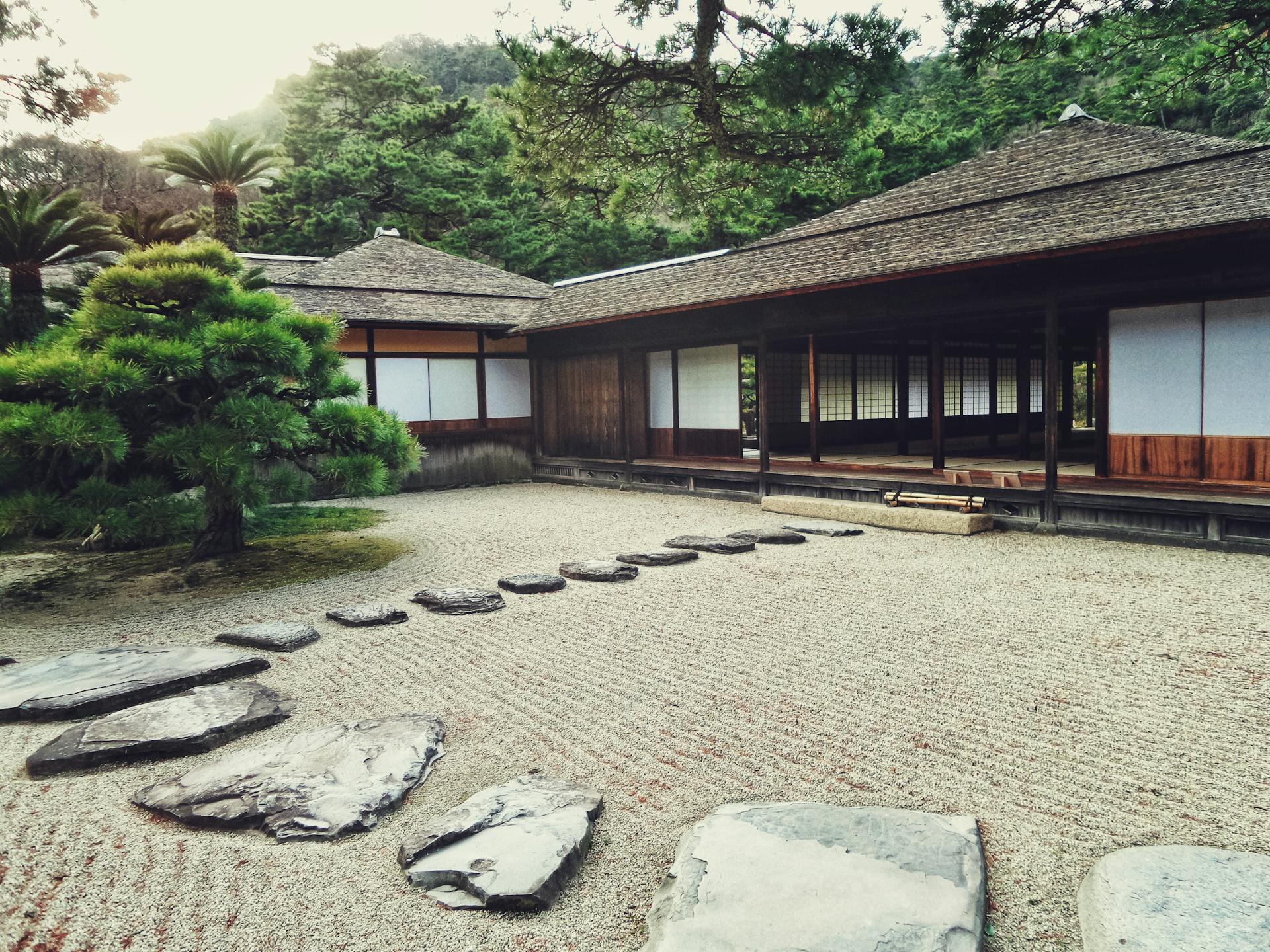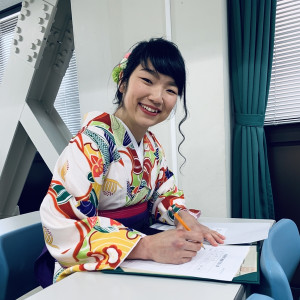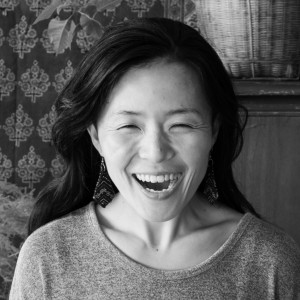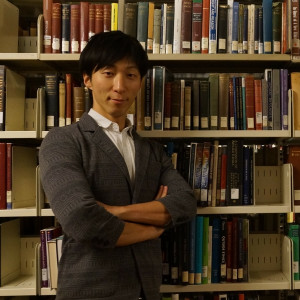✨ Biggest Themes of Japanese Minimalism
- Wabi-Sabi: The Beauty of Imperfection
- The Marie Kondo Effect: "Tidying Up" Canada
- The Impact of Japanese Minimalism on Canadian Fashion
- The Future of Japanese Minimalism in Canada
Did you know that the growing popularity of Japanese culture has not only impacted our taste for music and anime? It has also led us to appreciate Japanese minimalism and Zen philosophy a little more. But what do these new trends involve? Both promote simplicity and the appreciation of nature, influencing interior design, architecture, and personal well-being. Learn more about how Japan has influenced Canadian philosophies and understand the beauty behind minimalism!

Wabi-Sabi: The Beauty of Imperfection
Wabi-sabi is an aesthetic vision deeply rooted in Japanese culture. Its meaning is characterized by simplicity and imperfection and celebrates the modest and the rustic, as well as nature and the passage of time. Instead of seeking the perfection of structures and spaces, the wabi-sabi vision values the traces of the passage of time and simple design as authentic.
This principle promotes a much more serene and harmonious life in deep contact with nature, and it is also reflected in Japanese culture, for example, in the handmade ceramics used in tea ceremonies, the traditional architecture of homes, and Zen philosophy.
This aesthetic concept has also recently influenced Canadians' art, design, and lifestyle, proposing a conscious and minimalist approach to consumerism.
🌿 Wabi-sabi in Canadian home decor & lifestyle
This philosophy influences interior design and home decor, which is ideal for those who desire to be close to nature and enjoy a simple life. When decorating, most people choose natural materials such as unprocessed wood, hand-painted pottery, linen, and stone and appreciate coarse textures and worn finishes. Earthy, neutral hues and old, used, or handmade pieces, such as cracked vases or worn furniture with evidence of use, are greatly valued.
As regards lifestyle, wabi-sabi is articulated as an appreciation for the simplicity of things, such as gardening, home cooking, and meditation. There is also a growing trend towards sustainable consumption and a more conscious lifestyle. Below are examples of how Canadians adopt wabi-sabi in home decor and lifestyle. Let's learn more about how Japan influences even Canadian home lifestyles.
🏠 Home decoration
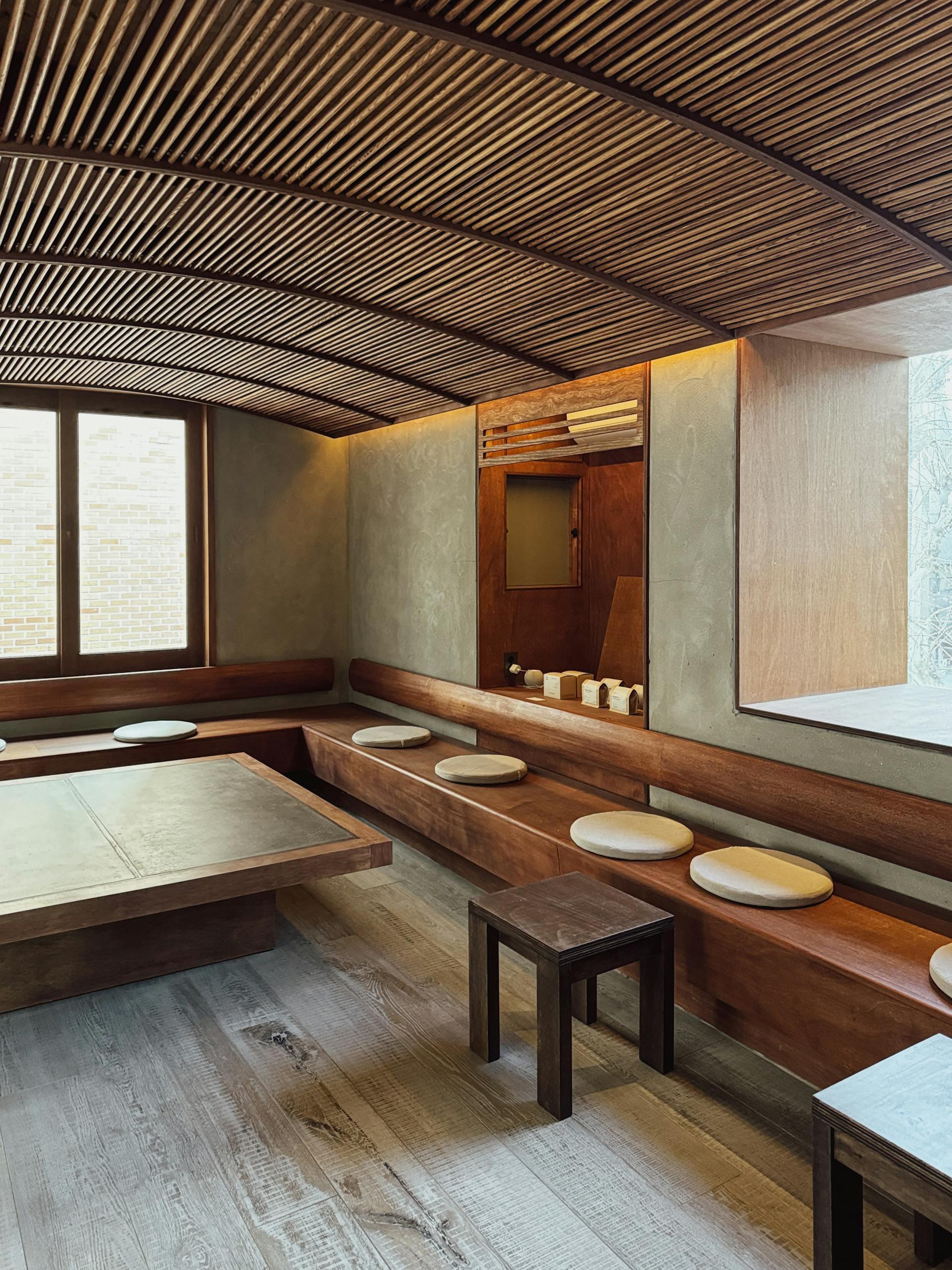
- Use of wood, stone, ceramics and linen.
- Preference for handmade objects with visible imperfections.
- Incorporation of neutral and earthy colors (beige, gray, moss green, brown).
- Aged or reused furniture that shows the passage of time.
- Decoration with open and uncluttered spaces, avoiding visual overload.
- Use of dried plants, branches or wild flowers as decorative elements.
- Appreciation for asymmetry and irregular shapes in tableware, textiles and objects.
🌿 Lifestyle
- Responsible consumption and reduction of material excess.
- Valuing the everyday special moments: enjoying morning coffee or a slow walk.
- Integrating mindfulness & meditation practice into routine.
- Cooking homemade meals with natural ingredients.
- Prioritizing meaningful relationships & experiences.
- Using old or used objects instead of new ones.
- Seeking moments of calm and contemplation

Feeling hungry? Discover the most popular Japanese food in Canada!
The Marie Kondo Effect: "Tidying Up" Canada
Marie Kondo is a renowned professional organizer, book author, and television presenter who helps people worldwide transform their cluttered homes into spaces that inspire serenity and inspiration by turning them into minimalistic and, above all, functional spaces. In fact, did you know that Marie's fascination with order first awakened when she was only five years old?
Marie Kondo rose to fame in 2011 when she published her best-selling book, "The Life-Changing Magic of Tidying Up," which revolutionized Canadian families. Since then, the KonMari method has gained thousands of followers in Canada and worldwide.
To truly cherish the things that are important to you, you must first discard those that have outlived their purpose.
Marie Kondo about her KonMari method
Marie Kondo and her KonMari method inspire thousands of people in popular culture to rethink their relationship with the accumulation of material objects and consumerism. Her philosophy of retaining only that which "brings you joy" resonated very well in a country whose quality of life is fast-paced and where housing space is limited, especially in urban centers like Toronto.
In addition, Marie Kondo and her KonMari method not only improved the quality of housing for thousands of people but also increased massive donations of clothing and household goods and a growing interest in minimalism and second-hand shops.
However, beyond the physical order, Kondo's approach helped many followers experience emotional well-being through simplicity and orderly spaces, detached from objects and a more intentional life. That is why this trend contributes to a more conscious and sustainable lifestyle.
🧠 The Marie Kondo Effect's psychological benefits
| Benefits | Psychological impacts of the KonMari method |
| ✨ Achieving mental clearness | A clean and tidy house transmits calm and reduces the feeling of being overwhelmed. |
| 😌 Reducing stress | External order and a tidy house also help to organize thoughts and make better decisions, stress-free. |
| 🎯 Getting better focus and productivity | Eliminating unnecessary distractions makes it easier to focus on what matters and stay productive. |
| 🧘♀️ Cultivating peace of mind | Organizing your personal spaces gives a feeling of mastery over one's life. |
| 🙏 Fostering gratitude | Keeping only what "brings joy" teaches one to value each object and its purpose more, avoiding accumulating things that we don't use. |
| 🌞 Improving mood | A harmonious and functional environment can positively influence our emotions and moods. |
| 💖 Boosting self-acceptance | Deciding what elements to keep reinforces one's connection with real needs. |
| 🕊️ Encouraging positive habits | Order promotes a more conscious life, with healthier and more sustainable routines, prioritizing self-care and mental peace. |
♻️ Impact on Canadian home organization, retail & consumer habits
Marie Kondo's philosophy transformed the way Canadian homes are organized, influencing consumer habits and even retail. Many Canadians who followed Marie Kondo's philosophy began to inspect their belongings more carefully and retain only the essentials and "what sparked joy," which led to increased donations to charities and the popularity of second-hand shops.
At the same time, Canadian consumers became more selective when shopping, preferring higher-quality products, fabrics, and much more sustainable elements and focusing on acquiring fewer items in line with more conscious consumption.
Discover how Japanese culture is influencing younger generations in Canada.
The Impact of Japanese Minimalism on Canadian Fashion
We have seen a minimalist fashion trend in recent times, fueled by Japanese cool style and conscious consumption. Kotn, Encircled, and Frank And Oak are a few brands that have been at the forefront in offering clean, functional & high-quality clothing, fueled by principles such as sustainability, fair trade, and local production.
Far from being boring and simple, the minimalist style represents a much more intentional way of dressing, rethinking the adverse effects caused by consumerism, fast fashion, and impulse buying. Minimalism connects with those who seek a balance between the aesthetics of their clothes and their personal style, the sustainability of the materials used to make them, and the importance of a functional wardrobe.
In short, implementing these minimalist Japanese philosophies not only helps us dress better and in a more conscious way but also contributes to damaging our environment less.
🎨 Five elements of Japanese minimalist fashion

- Wear neutral tones: Choosing soft colors such as white, gray, beige, and black conveys calm and versatility.
- Wear clean lines and shapes: Straight cuts and simple silhouettes emphasize comfort and visual harmony.
- Choose quality and organic material: Go for natural fibers, including organic cotton, linen, wool, and durable fabric.
- Prefer functionality & style: Wearing garments easily combined and worn on multiple occasions or seasons.
- Build a timeless wardrobe: Sustainable design is intended to last beyond passing clothing trends.
📝 Note: The minimalist approach is inspired by Japanese concepts such as "ma," which means the space between things, and "shibui," which represents subtle yet elegant beauty.
🌏 Shifting toward sustainable clothing choices
Many Canadians seeking a more reflective way of dressing embrace the "capsule wardrobe" philosophy, which reduces their closet to a small number of high-quality, well-thought-out pieces that can be dressed up and down. This trend follows the call for quality rather than quantity and the desire to simplify and live more consciously. There is a new trend towards sustainable fashion companies employing recycled materials, ethical production, and supply chain transparency.
Most start this green clothing revolution with a "30-day challenge" dressing in only 10–15 simple pieces of clothing, demonstrating that one doesn't have to dress much to look great.
The Future of Japanese Minimalism in Canada
In the long term, minimalism promises to continue to consolidate its position as a key influence on lifestyle, fashion and design in Canada. Its focus on simplicity, quality and balance responds to a growing need to live with greater intention and less excess. In a global context marked by uncertainty and the desire for sustainability, the values of wabi-sabi, Zen aesthetics and conscious consumption will continue to gain followers.
More Canadians are expected to adopt lifestyles focused on the essentials, support ethical brands and revalue craftsmanship and durability. Thus, minimalism will not only be a passing trend, but a philosophy of life that create a deep and lasting cultural change in the way of living, dressing and connecting with the environment.
Would you like to try something less minimalistic and more festive? Discover the top Japanese festivities in Canada.

